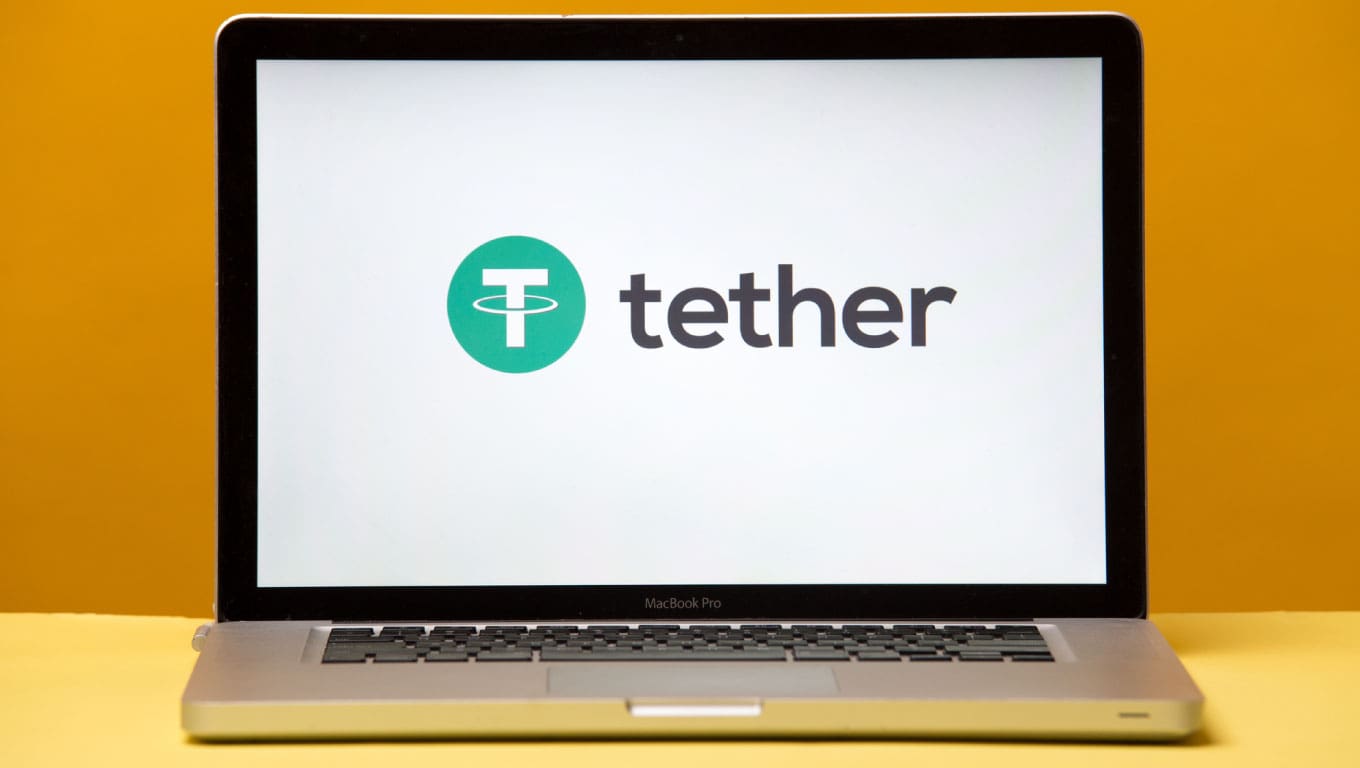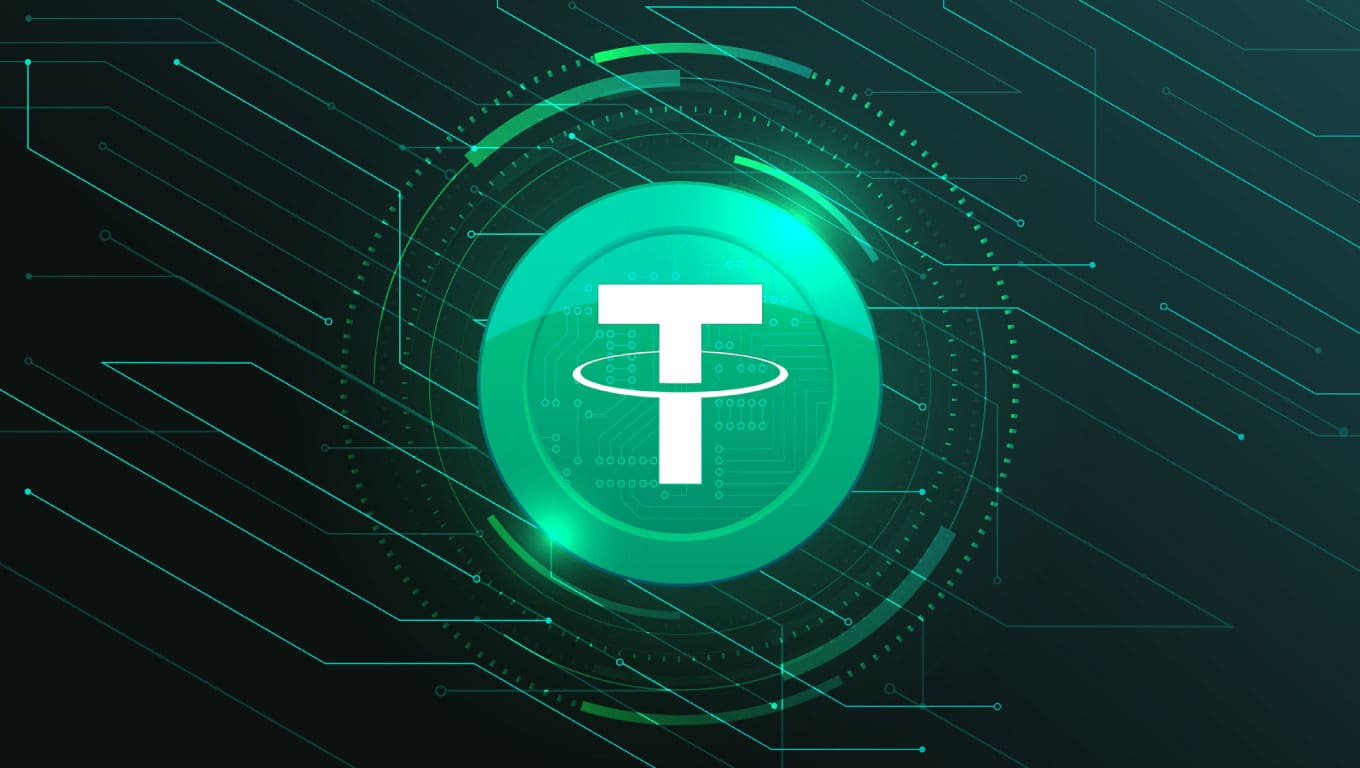Tether USDT: introduction
In this in-depth analysis we talk about the main stablecoin by capitalization, as well as the third cryptocurrency overall: Tether USDT.
The adoption of cryptocurrencies is constantly growing, but alongside bitcoin, Ether & co. we find stable cryptocurrencies, known as stablecoins. These are currencies that, unlike a normal cryptocurrency, do not fluctuate in value all the time. Instead, their objective is to remain linked to the value of another asset, usually a fiat currency such as the US dollar.
As we said, USDT is the leading currency of this type in terms of market cap, as well as one of the largest companies in the entire sector.
Let’s get to know it better, especially by delving into the mechanism that keeps its value fixed. We’ll then highlight the differences with a close colleague (USDC), and finally take a quick look at where you can buy Tether.
What is Tether?
First of all, Tether is a company founded over ten years ago by a group of digital currency enthusiasts. Over time, their ideas took shape, driven by the desire to create something that went beyond the traditional financial system. Thus, in 2014, Tether (the cryptocurrency) was born, also known by the ticker USDT.
Now we all know how it ended: USDT is one of the most capitalized cryptocurrencies ever, and the one that has the highest trading volumes (yes, even higher than BTC).
Let’s briefly describe how this coin works.
Companies, exchange platforms or private investors can carry out the Tether KYC procedure in order to become accredited. This makes it possible to deposit fiat currency, obtaining an equivalent quantity of Tether in exchange (except for fees). For example, a deposit of one million dollars will result in the receipt of one million Tether.
The USDT in question are “produced” for the occasion; the dollars paid in are kept safe.
At this point, the USDT can circulate freely. If, for example, an exchange has requested them, they can end up as capital that allows users to trade. Or, a company could use them to pay for products or services performed on its behalf by another company. The destination and reasons for the payment are irrelevant; what matters is the fact that USDT acts as a normal medium of exchange, obviously if accepted by both parties.
At any time it is possible to sell Tether on centralized and non-centralized exchanges, as long as they support this stablecoin (which is almost certain). In addition, an authorized entity can always go directly to the source and ask the Tether company to exchange a certain amount of USDT, receiving fiat currency in exchange.
When this happens, Tether destroys the USDT, in order to maintain the right proportion between circulating and reserve currency.
We need to reflect on the subject of reserves, because they are the basis for maintaining a stable value. Tether has been criticized several times for its lack of transparency on this point. In fact, there have been several lawsuits, which have also resulted in convictions. The reason? The reserves, which should always be 1:1, have not always been so.
The strength of a fully backed stablecoin of this kind should be precisely this: if there are 10,000 USDT in circulation, I can be sure that somewhere in Tether’s coffers there are 10,000 US dollars. This way, regardless of what happens in the market, the value of USDT is always the same. If the reserves are not sufficient, what we have just seen is no longer valid and could cause major problems in times of crisis.
However, the message has reached its destination. Since 2023, Tether has started to move towards transparency, something it previously lacked. Now it is possible to view the reserves almost in real time, directly on the company’s website. This is an important change that allows everyone to feel more at ease.

What is Tether used for?
USDT has different applications, but we can summarize them as follows: the use cases of a normal currency are the same as those of Tether. Let’s look at some examples.
Firstly, it is possible to exchange the coin between individuals, as well as using it to make purchases if the merchant offers this possibility. A side effect of normal cryptocurrencies is volatility, which makes many sellers reluctant to accept them. Well, a stable crypto like this eliminates the problem.
Companies can also use USDT to make quick and low-cost purchases and sales. In addition, Tether is also suitable for storing value outside of traditional banks, just follow the basic security rules.
Going deeper into our sector, USDT is ubiquitous in trading pairs on various exchange platforms. This applies not only to the spot market, but also to derivatives such as perpetuals.
Moving on to the DeFi world, Tether is widely used in crypto/stablecoin liquidity pools, in addition to MakerDAO’s main competitors USDC and DAI. But beware of impermanent loss.
In short: we can see USDT exactly like a normal currency, because it is in fact the representation of the dollar on the blockchain. However, let’s not confuse it with CBCD, the Central Bank Digital Coin: Tether USDT is issued by a private company and not by a central bank or state entity.
Value of a USDT
Being a stablecoin, the value of Tether USDT should always be equal to the dollar. In fact, except for a few rare events that occurred in and before 2017, this currency has always stayed on track, recording negligible variations from the US dollar.
From the USDT/USD graph on TradingView (data source Coinbase), we can see that the deviations from the peg are a few thousandths of a dollar (if not even less). In short, everything is as it should be.
USDT vs USDC
Let’s compare the two most popular names among these particular cryptocurrencies.
USD Coin, also known as USDC, is actually quite similar to USDT. It too is centralized (there is a company behind it), pegged to the dollar and collateralized by 1:1 reserves.
The big difference is in transparency. In fact, Circle, the company that issues USDC, has always focused on sharing all information. It is no coincidence that it is a perfectly regulated company, that respects the requirements of the law and the SEC, and is based in the United States. Even the code is transparent as it is open source.
For this reason, USDC has always been seen as a preferable alternative for those who want to have more certainty about the status of reserves. However, let’s consider two points:
- Tether is now also aiming for transparency and we can see the funds in real time;
- Centre is still a company and has full control over USD Coin. This means that it can, for example, censor transactions and wallets, something that goes against the principles on which the blockchain world was founded.
USDC is also present on almost all exchanges, both centralized and non-centralized.

Where to buy Tether?
There really is an embarrassment of choice and a list of the options would be very long and boring. However, to leave nothing to chance, here are some alternatives with related information:
Centralized exchanges: Bybit, Bitget, Binance, OKX;
Other CEXs and CeFis: Crypto.com, Kraken;
Decentralized exchanges: Uniswap, PancakeSwap, Raydium;
Wallet swaps: Rabby, MetaMask also in the MetaMask Mobile version.

